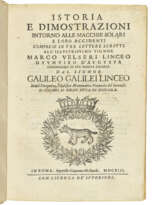ID 794594
Lot 160 | GALILEI, Galileo (1564-1642)
Estimate value
£ 40 000 – 60 000
Discorsi e Dimonstrazioni Matematiche, intorno due nuove scienze attenenti alla Mecanica & i Movimenti Locali. Leiden: Elzevier Press, 1638.
First edition of 'the first modern textbook of physics, a foundation stone in the science of mechanics' (Grolier/Horblit). Forbidden to publish in Italy due to his heretical support for heliocentrism, Galileo managed to have a manuscript copy of the present work smuggled out of the country to France, from where it was brought to the Elzeviers in Holland. Galileo adopts the dialogue format, as he did in his 1632 Dialogo, to introduce his two new sciences: ‘the engineering science of strength of materials and the mathematical science of kinematics’ (DSB). Subject matter includes uniform and accelerated motion, parabolic trajectories, the constitution of matter, the nature of mathematics, the role of experiment and reason in science, the weight of air, the nature of sound and the speed of light, among other things. The Discorsi ‘underlies modern physics not only because it contains the elements of the mathematical treatment of motion, but also because most of the problems that came rather quickly to be seen as problems amenable to physical experiment and mathematical analysis were gathered together in this book with suggestive discussions of their possible solution’ (DSB). "The Aristotelian concept of motion was replaced by a new one of inertia and general principles were sought and found in the motion of falling bodies, projectiles and in the pendulum... The concept of mass was implied by Galileo's conviction that in a vacuum all bodies would fall with the same acceleration" (Dibner). ‘Mathematicians and physicists of the later seventeenth century, Isaac Newton among them, rightly supposed that Galileo had begun a new era in the science of mechanics. It was upon his foundations that Huygens, Newton and others were able to erect the frame of the science of dynamics, and to extend its range (with the concept of universal gravitation) to the heavenly bodies’ (PMM).
The Discorsi was Galileo’s last published work and provides the mathematical analyses to complement the philosophical discussion of the Dialogo,. Forbidden to publish in Florence or Rome by the Congregation of the Index, and unable to obtain an ecclesiastical licence to print the work in Venice, Galileo managed to have a manuscript copy smuggled out of Italy to France, from where it was brought to the Elzeviers in Holland. Because the printing of any of Galilei's works was forbidden after publication of the Dialogo, the manuscript of the Discorsi had to be smuggled out for printing by the Elzeviers at Leiden. Brunet II, 1642; Carli & Favaro, 162; Cinti 102; Dibner 141; Horblitt 36; Norman 859; Riccardi I, 516 12⁄1; Roberts & Trent Bibliotheca Mechanica p.129; Sparrow 75; Willems 468; PMM 130.
Quarto (203 x 154mm). Errata leaf at end. Woodcut Elzevier device on title, woodcut illustrations and diagrams, ornamental initials, head- and tailpieces (expertly repaired tear in 6 leaves just into text, a few other minor marginal repairs, small marginal wormtrack in last quire). Early flexible vellum, title lettered on spine, speckled edges (endpapers renewed, stains on front cover). Provenance: 'F M C F' (contemporary initials on title) – Lilly Library, Indiana University (duplicate release stamp on final verso and label on rear pastedown; sold Sotheby’s, 27 Sept. 1988, lot 190) – [sold Christie’s, 20 October 1999, lot 27].
Special notice
No VAT on hammer price or buyer's premium.
| Artist: | Galileo Galilei (1564 - 1642) |
|---|---|
| Place of origin: | Western Europe, Europe, The Netherlands |
| Auction house category: | Printed books |
| Artist: | Galileo Galilei (1564 - 1642) |
|---|---|
| Place of origin: | Western Europe, Europe, The Netherlands |
| Auction house category: | Printed books |
| Address of auction |
CHRISTIE'S 8 King Street, St. James's SW1Y 6QT London United Kingdom | |
|---|---|---|
| Preview |
| |
| Phone | +44 (0)20 7839 9060 | |
| Buyer Premium | see on Website | |
| Conditions of purchase | Conditions of purchase |
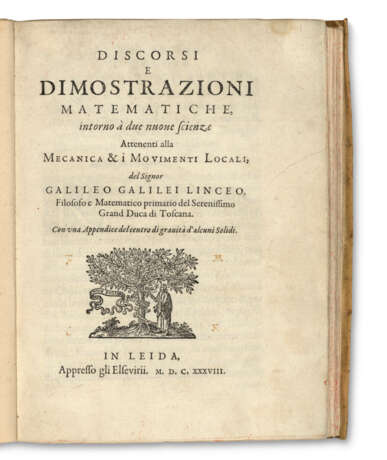
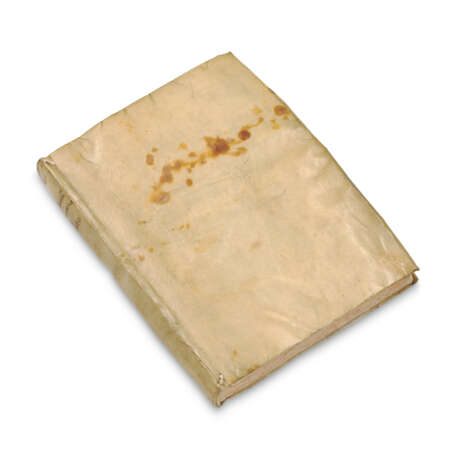
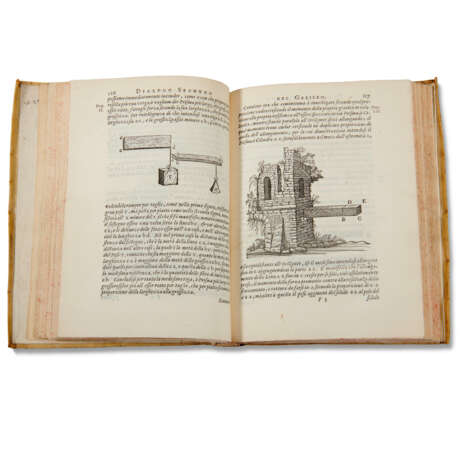

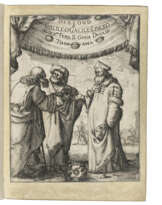




![[GALILEO GALILEI (1564-1642) and Girolamo SPINELLI (c.1580-1647)]](/assets/image/picture_4734998/81ecb/b78ba02793ea9f7c89bc2421c803edfc1752012000jpg__fix_162_205.jpeg)
